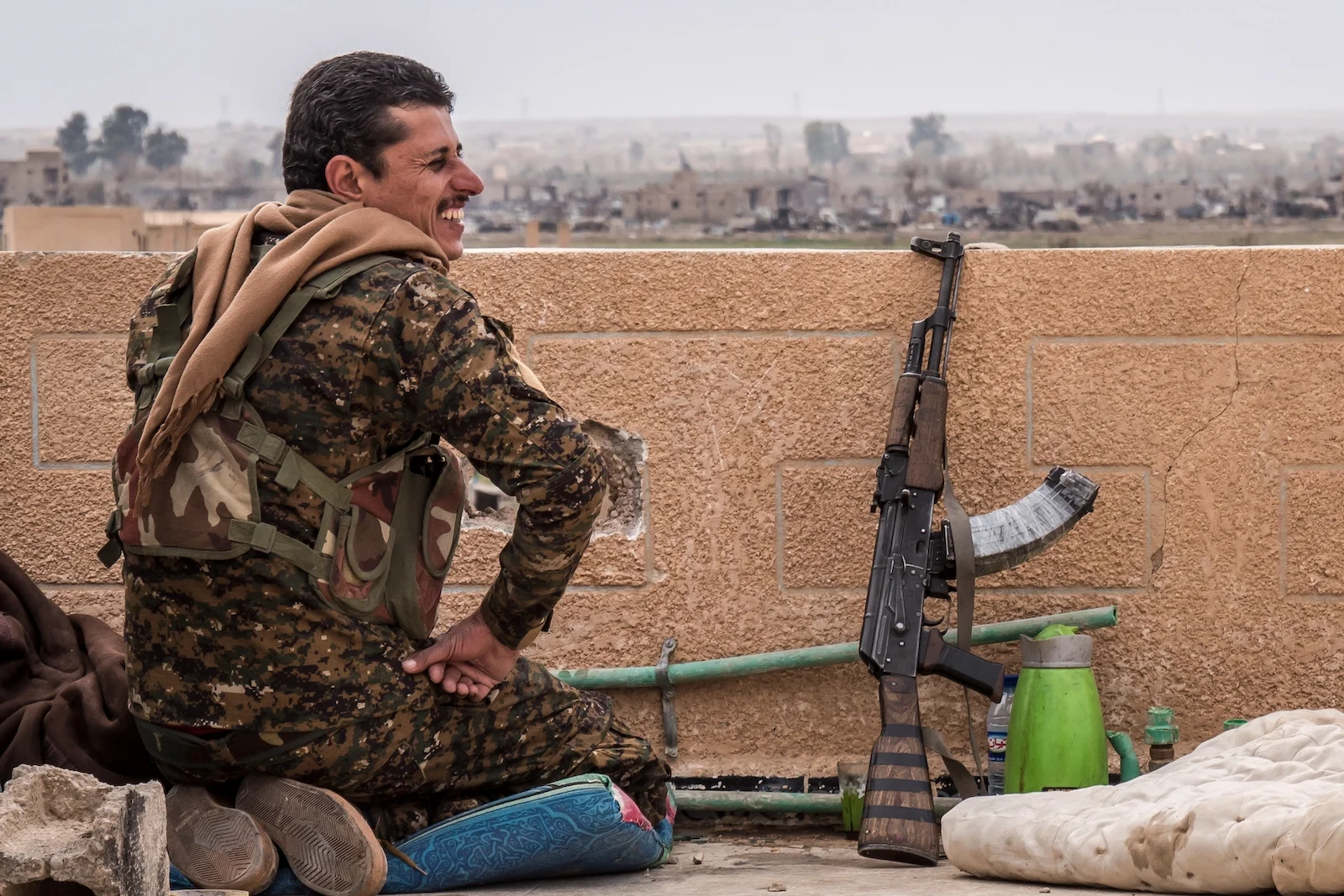
What the Kurds Reintegration Really Says About Syria’s Future
Although the formal announcement of the Syrian Democratic Forces (SDF) reintegration into the Syrian state has faded from the headlines, its consequences are only beginning to unfold. The agreement is a significant win for interim President Ahmed al-Sharaa, with regional and international actors now recalibrating their roles.
The Kurdish-led, U.S.-backed Syrian Democratic Forces (SDF), which control Syria’s oil-rich northeast, formally agreed to rejoin the central government’s institutions. According to a statement from the Syrian presidency, the deal marks a turning point for Syria following a fourteen-year civil war that killed hundreds of thousands of civilians.
Photographs from Damascus captured the symbolic moment: Interim President Ahmed al-Sharaa clasping hands with SDF commander Mazloum Abdi, sealing an accord that promises the gradual incorporation of the SDF’s civilian and military apparatus into the framework of the Syrian state.
Though largely overlooked by global headlines, the agreement significantly recalibrates Syria’s internal power dynamics. The reintegration of the SDF underscores a clear repudiation of federalist ambitions and the notion of partition. Far from a hasty political maneuver, the deal is the result of sustained strategic pressures that left both sides with little alternative. For the SDF, shifting geopolitical winds and diminishing Western support made accommodating Damascus less a choice than a necessity.
The roots of this agreement lie not in internal Syrian deliberations but in external geopolitical realignments. Chief among these was the shift in U.S. policy toward Syria, especially under the Trump administration. The Kurdish leadership gradually realized that Syria had receded from Washington’s list of strategic priorities. Relying exclusively on U.S. support became increasingly untenable, particularly given Trump’s warm relations with Turkish President Recep Tayyip Erdogan. Bereft of reliable Western backing, the SDF found itself exposed to Turkish military threats with no credible safety net.
What was once useful Western leverage against the Assad regime had become a geopolitical burden. The SDF’s utility to Washington diminished, and so the Kurdish leadership sought alternatives—however unpalatable. Damascus, once the adversary, became the fallback.
However, this pivot was not shaped by Washington and Ankara alone. A broader regional thaw—especially among Sunni Arab states—shifted the regional consensus. Under interim President Ahmed al-Sharaa, the new Syrian government had begun to reestablish diplomatic and political traction in Arab and international circles, even while wrestling with persistent domestic instability.
This Arab rapprochement, paired with a conspicuous European silence on Syrian military crackdowns in the coastal regions, conveyed a blunt message: federalism and cantonization were no longer viable paths. The era of experimenting with decentralized governance models was over. Reintegration into the Syrian state, with all its flaws and ambiguities, was the only remaining route.
Equally important, though less openly discussed, were the quiet movements of Iranian-backed, pro-Assad Alawite factions, which quietly assumed control of key coastal strongholds. At the same time, the SDF was making strategic pushes near Tabqa and the Euphrates Dam. These maneuvers were met with a swift and pointed response from Turkey—military action and unambiguous threats of escalation. The message was unmistakable: any confrontation without U.S. backing would be a strategic miscalculation.
Public narratives may frame the agreement as a sovereign, internal recalibration, but diplomatic whispers suggest otherwise. American officials reportedly facilitated indirect negotiations between Damascus and the SDF, aiming to choreograph a dignified withdrawal for the latter—one that would avoid the perception of political defeat. This covert involvement reflects a familiar U.S. diplomatic posture: visible disengagement coupled with quiet back-channel influence.
Perhaps the most perilous gap in the agreement lies in what remains unsaid: the fate of the ISIS detention camps. Al-Hol and Ghweiran—housing more than 20,000 detainees—are potent flashpoints. Damascus has consistently pushed to assume control, but the deal remains silent on this front. The unresolved status of these camps is a time bomb—one the international community watches with increasing unease.
Another consequential outcome is Damascus’s regaining of economic lifelines in northeast Syria: oil, gas, wheat, and water. Early signs are already visible. The Qatari government has opened direct lines with Syria’s oil ministry, while UN agencies have initiated assessments of the Homs refinery. These signals are more than symbolic.
Qatar’s outreach was particularly striking. Rather than merely observe from afar, Doha proactively engaged Damascus—a gesture that recognizes Syria’s desperate need for economic support in rebuilding much of the country destroyed by years of fighting. This was not a knee-jerk reaction to shifting tides but a calculated effort to re-anchor Arab engagement with Syria’s reconstruction. The Homs refinery initiative is emblematic of this approach: stabilizing energy production to reinforce state legitimacy.
Should the refinery’s rehabilitation succeed, Syria’s electrical capacity could jump from 1,500 to roughly 4,500 megawatts. Such an increase would bolster the regime’s political capital by restoring a modicum of normalcy to daily life.
In the end, this agreement is less a triumph than a sober admission of mutual constraint. The SDF has relinquished its federalist ambitions, and the Syrian regime has folded a substantial adversarial faction back into its fold without firing a shot. But significant questions remain. Who will administer the ISIS camps? Can the SDF and the Syrian military function without fissures? Will entrenched political actors within Syria accept the new reality?
What is undisputable is that Syria has entered a new political phase—a return to centralized authority after years of fragmentation. Federalism has been discarded, and partition is no longer a serious proposition. Damascus, bruised but unbroken, has reclaimed the narrative—and the territory.
